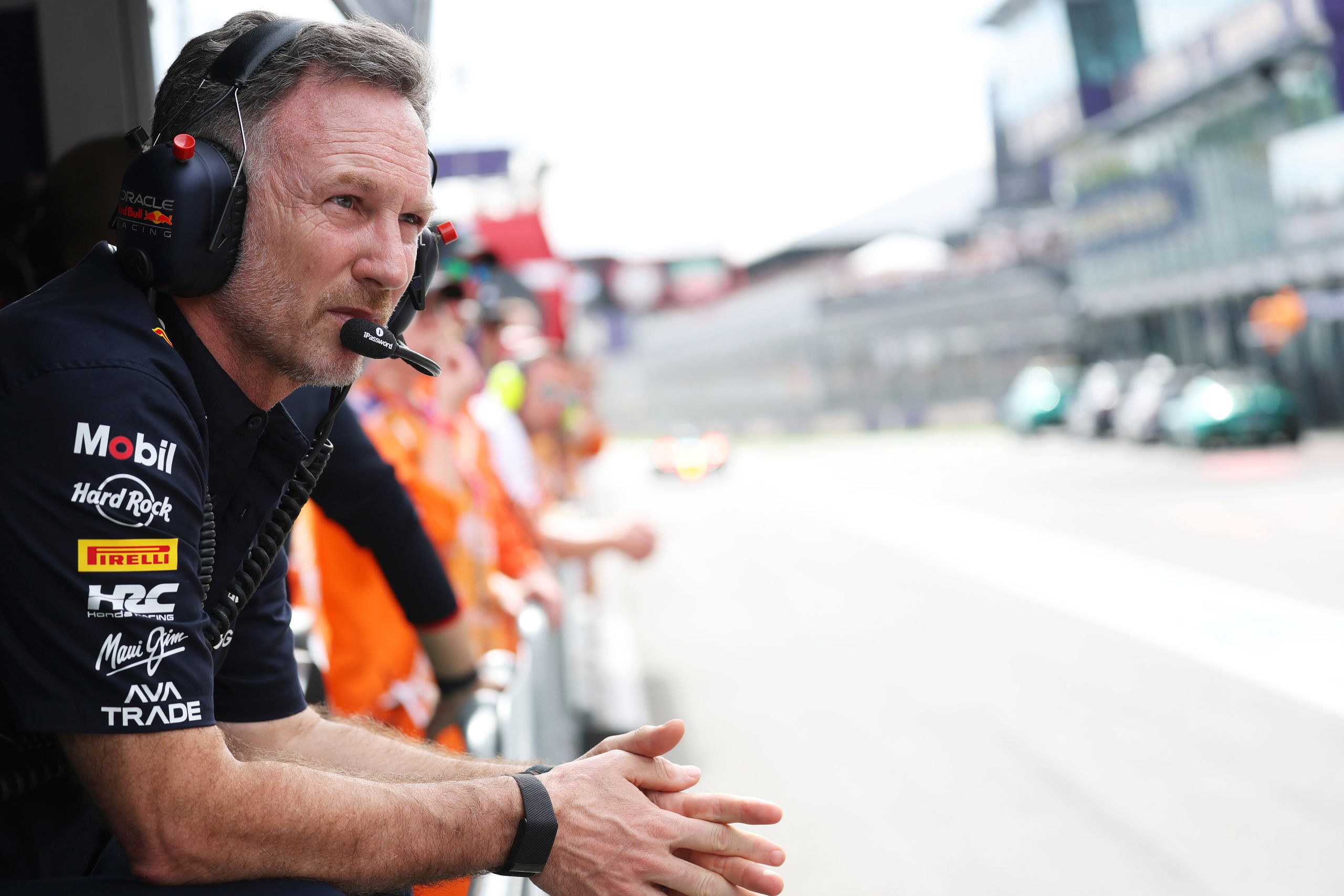Why Do F1 Drivers Sit The Way They Do?
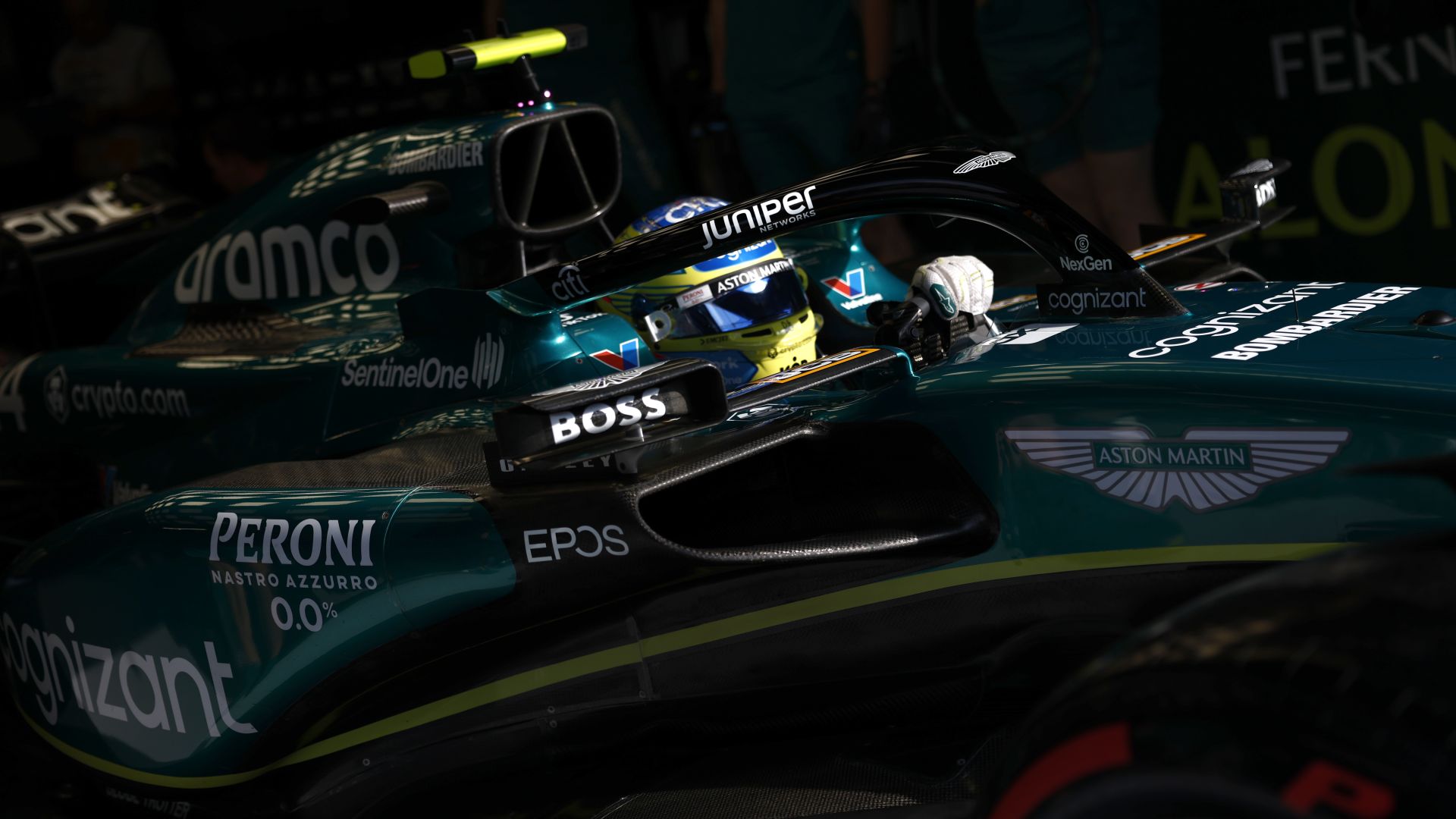
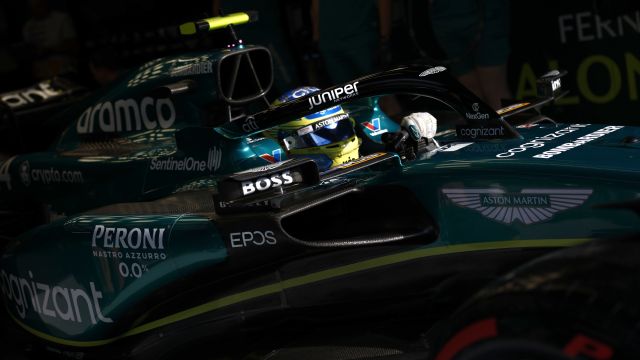
In the high-speed world of Formula 1 racing, every detail matters, down to the way the drivers sit in their vehicles. You might have wondered, why do F1 drivers sit the way they do?
The seating position of F1 drivers is meticulously designed to optimize safety, control, and aerodynamics. This low and reclined position helps in reducing the car’s center of gravity, offering better stability during the race. It also aids in protecting the driver during crashes by distributing forces more evenly across the body.
In this article, we will delve deeper into the intricacies of the seating position of F1 drivers, shedding light on the science and the rationale behind it. We will explore how this unique seating arrangement contributes to enhancing the performance of the drivers and ensuring their safety. Moreover, we will answer some of the most pressing questions you might have about the world of Formula 1 racing.
Key Takeaways
- F1 drivers sit in a reclined position for optimal performance and safety.
- The low seating profile helps reduce drag and improve the car’s handling.
- F1 seats are made from carbon fiber and specifically designed for each driver.
The Reclined Mystery: Why F1 Drivers Lay Back While Driving
Introducing the typical seating position of F1 drivers, it is essential to mention that over the years, there has been a noticeable transformation. Formula 1 car design has evolved, leading to a shift from the conventional upright position to the more peculiar fully reclined, feet-up position seen today.
New viewers of Formula 1 races often question the reclined seating position of the drivers. As oddly as it appears, there are essential factors primarily responsible for this peculiar driving posture – comfort, control and performance, and safety.
Comfort is crucial for F1 drivers, given that races can last up to 2 hours. It is vital that drivers remain as comfortable as possible to maintain peak performance and stay focused. To achieve this, each driver has a seat insert molded specifically to their body shape, utilizing high-density foam.
Control and performance significantly influence why F1 drivers sit reclined. Extracting maximum performance from their 1000bhp high-downforce cars requires skill and confidence. If the seating position isn’t precise, the driver might lack assurance in the car, negatively affecting their performance. Even a 75mm longitudinal window exists for the position of the driver in the car according to the 2023 F1 technical regulations.
Safety is the most crucial aspect to consider when designing the seating position in an F1 car. The seat is an integral part of the car’s survival cell, and there are strict rules for car designers to follow. Drivers are securely fastened in their seats, ensuring that they would be unharmed even if the car were to be upside down.
In conclusion, the reclined seating position of F1 drivers is a result of the quest to ensure comfort, gain control and performance, and prioritize safety. New viewers of the sport may find this position unconventional, but understanding its practical reasoning can clear up any confusion surrounding why F1 drivers sit the way they do.
A Close Look at the Driver’s Position
The ergonomics of a Formula 1 driver’s position plays a crucial role in their overall performance and comfort during a race. As F1 car design has evolved over the years, so has the seating position, with modern drivers now seated in a fully reclined, feet-up position.
A comfortable F1 seating position is vital as races can last up to two hours, and any discomfort can severely affect a driver’s concentration and performance. To maximize comfort, each driver has a seat insert molded specifically to their body shape using high-density foam, which provides support while they are seated in the car. The headrests are also carefully designed to keep the driver’s helmet in place.
Control and performance are directly linked to the driver’s position in the car. When seated correctly, the drivers reach all the controls without any difficulty and have a high level of confidence in their control of the car. A proper seating position also enables the driver to intuitively feel the car’s movements, ensuring that they are in tune with the car’s dynamics.
Safety is the most important aspect of getting the seating position right in an F1 car. The seat is an integral part of the car’s survival cell, and there are strict rules in place for F1 car designers to adhere to. The seat must be easily removable by rescue crews in case of an emergency, and the drivers are so well secured in their seats that they would be safe even if the car was upside down.
As F1 car design has advanced over time, the seating position has adapted accordingly. In the early years of F1, drivers sat in a more conventional, upright position, with their legs outstretched in front of them. In the 1960s and 1970s, F1 cars became lower and sleeker, with smaller engines and a greater focus on aerodynamics. This led to a more reclined seating position, with the driver’s torso slightly angled back and their legs stretched out in front of them.
By the 1980s, the F1 seating position had moved closer to the front of the car, with drivers sitting low down and their feet close to the front of the chassis. Safety concerns eventually led to rules requiring the driver’s feet to be positioned behind the front axle line.
In the 1990s, the focus on aerodynamics and the adoption of higher noses and underbody aerodynamics led to another significant change in the driver’s position. Their feet were now raised above the level of their hips, and their torsos angled further back to around 40 degrees. This enabled designers to create more efficient aerodynamics at the front of the car.
In summary, the evolution of F1 car design has had a significant impact on the ergonomics of the driver’s seating position. A well-designed seat that takes into account comfort, control, performance, and safety ensures that F1 drivers can remain focused and perform at their best throughout a race.
Watch: Nico Rosberg Explains The Driver’s Seat Position
Why the Right Seating Position Matters
Finding the Balance Between Comfort and Efficiency
The right seating position in a Formula 1 (F1) car plays a critical role in both driver health and performance. F1 races can be up to 2 hours long, so it is essential that drivers remain as comfortable as possible throughout the race. An un-ergonomic seating position can cause aches and pains, having a major impact on a driver’s ability to stay focused and maintain peak performance. Each driver has a seat insert molded specifically to their body shape, using high-density foam to support their entire body when in the car. The headrests also help keep the driver’s helmet securely in place, adding to their comfort.
Besides comfort, the seating position directly affects a driver’s control and performance. F1 drivers need to be able to reach all of the necessary controls in their cars with precision. If the seating position is even slightly off, the driver may lack confidence in the car and struggle to perform at their best. F1 teams have some freedom in car design, which allows them to move the cockpit and driver’s position forwards and backwards. However, if a driver is not satisfied with their position, it can reduce their ability to intuitively feel the car’s movements, hindering their overall performance.
Safety is another crucial aspect of finding the right seating position. The seat is an integral part of an F1 car’s survival cell, and there are strict rules for F1 car designers to adhere to. The way the seat is fixed to the chassis is controlled, ensuring it can be easily removed by rescue crews in case of an emergency. This level of safety means that drivers would be secure even if an F1 car were to drive upside down.
The evolution of the F1 seating position has taken place through the years, transitioning from a more conventional upright position to the fully reclined, feet-up position we see today. This change has come as a result of improving car designs, focusing on aerodynamics, lower center of gravity, and safety regulations. As F1 car technology continues to advance, the seating positions will likely continue to evolve as well, always seeking to find the perfect balance between comfort, efficiency, and safety for the driver.
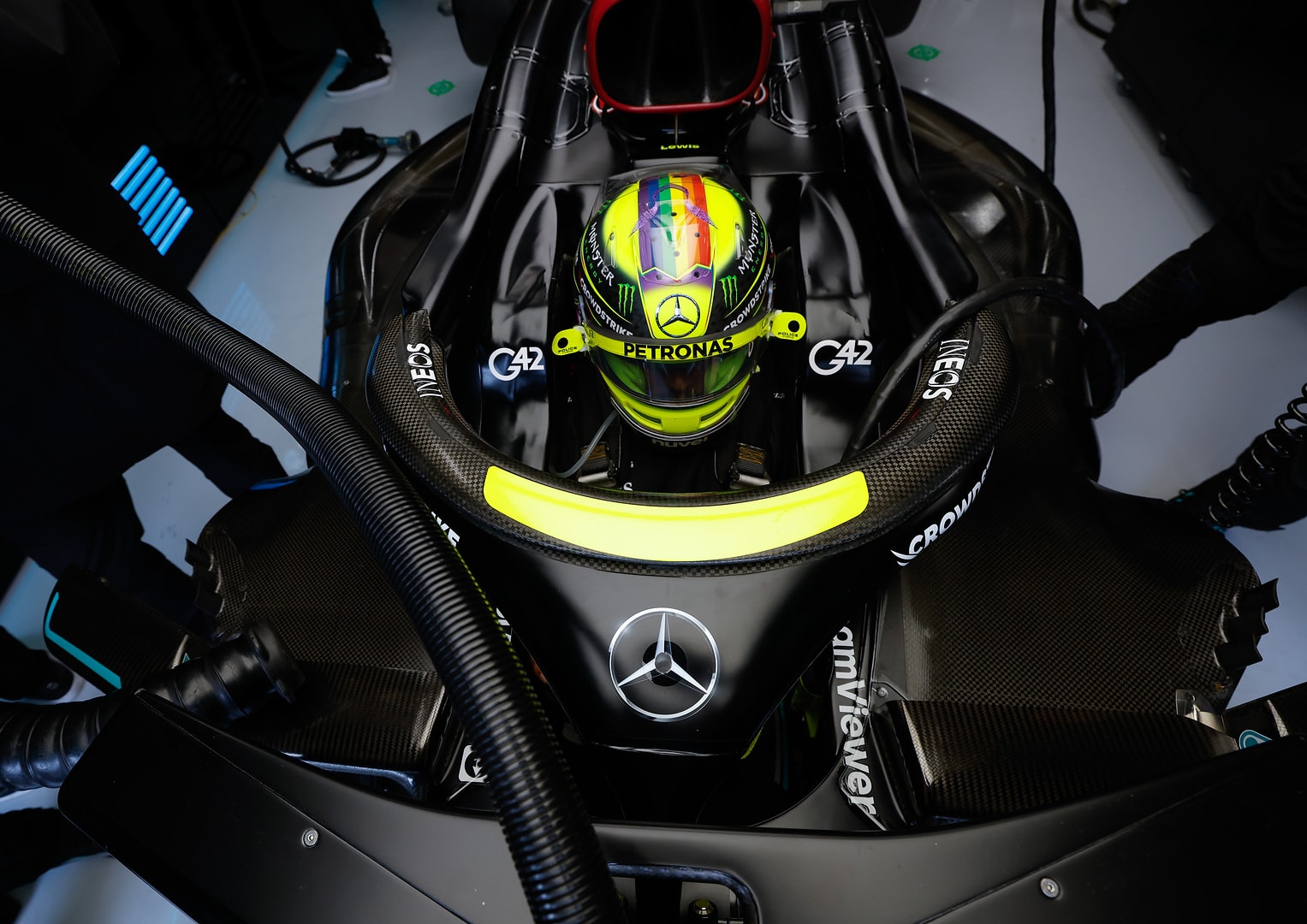
Design and Engineering of F1 Seats
The design and engineering of F1 seats prioritize driver comfort, performance, and safety. By ensuring an optimal seating position, drivers can better control their cars and react to load changes on the track. The advancement in technology and materials used in F1 seats has significantly improved over the years, enhancing driver experience and safety.
Seat Material
F1 seats are commonly made from carbon fiber shells customized to fit individual drivers’ body shape and size. The molding process starts by having the driver sit on an empty plastic bag filled with expanding foam. The foam is then trimmed to fit both the driver and the chassis and is used to create a mold for the carbon seat shell.
Carbon fiber provides an excellent balance of strength, rigidity, and lightweight properties, making it ideal for F1 seats. It ensures that drivers are firmly secured in their positions while still allowing some level of comfort and ease of movement.
Steering Wheel Design
The steering wheel is an essential aspect of the driver’s office. Modern F1 steering wheels are incredibly complex, allowing the driver to control numerous car functions and settings during the race. The steering wheel’s ergonomic design and placement are critical for the driver’s overall performance and ability to react accurately and efficiently while driving.
It is important to ensure that the driver’s feet are correctly positioned on the pedals, and they have an optimal field of vision. If their feet are not comfortably resting on the floor of the chassis or the pedal placement is slightly off, it can affect their control over the car and lead to muscle fatigue.
In conclusion, the design and engineering of F1 seats involve intricate customization processes, using advanced materials and technologies to enhance driver comfort, performance, and safety. Proper seat and steering wheel designs are crucial in allowing drivers to focus on driving and achieving optimum performance on the racetrack.
Dissecting Drag: How It Influences the Seating Design
Drag in the context of Formula 1 racing refers to the air resistance a moving car faces as it speeds through the track. The main goal of F1 teams is to minimize drag, which helps increase the car’s acceleration and top speed. To reduce drag, the car’s design must be more aerodynamic, cutting through the air rather than being resisted by it. The most effective way to achieve this is by reducing the car’s cross-sectional area, which is the height and width of its front end.
One significant factor that influences the seating position in an F1 car is the need to reduce drag. By adopting a reclined seating position, the driver is positioned lower in the car, which in turn decreases the vehicle’s cross-sectional area. This low, sleek design allows F1 cars to penetrate the air more efficiently and achieve higher speeds with less resistance.
Additionally, the reclined driver position helps maintain a low center of gravity, which is crucial for stability and balance during cornering, braking, and accelerating. A lower center of gravity enables the car to change direction quickly and make sharp turns, which is vital when navigating F1 tracks packed with twists and bends.
When adopting the reclined seating position, drivers can access the pedals more comfortably and easily. The customized bucket seats accommodate the drivers in a configuration that provides minimal side-to-side movement during the race. This snug and secure seating design ensures that drivers are as comfortable and confident as possible during the high-stress demands of an F1 race.
In conclusion, the unique and reclined seating position of F1 drivers is a product of the continuous evolution in car design to enhance aerodynamics and maintain a low center of gravity. The result is a highly efficient, stable, and fast car capable of delivering exceptional performance on the world’s most challenging racing circuits.
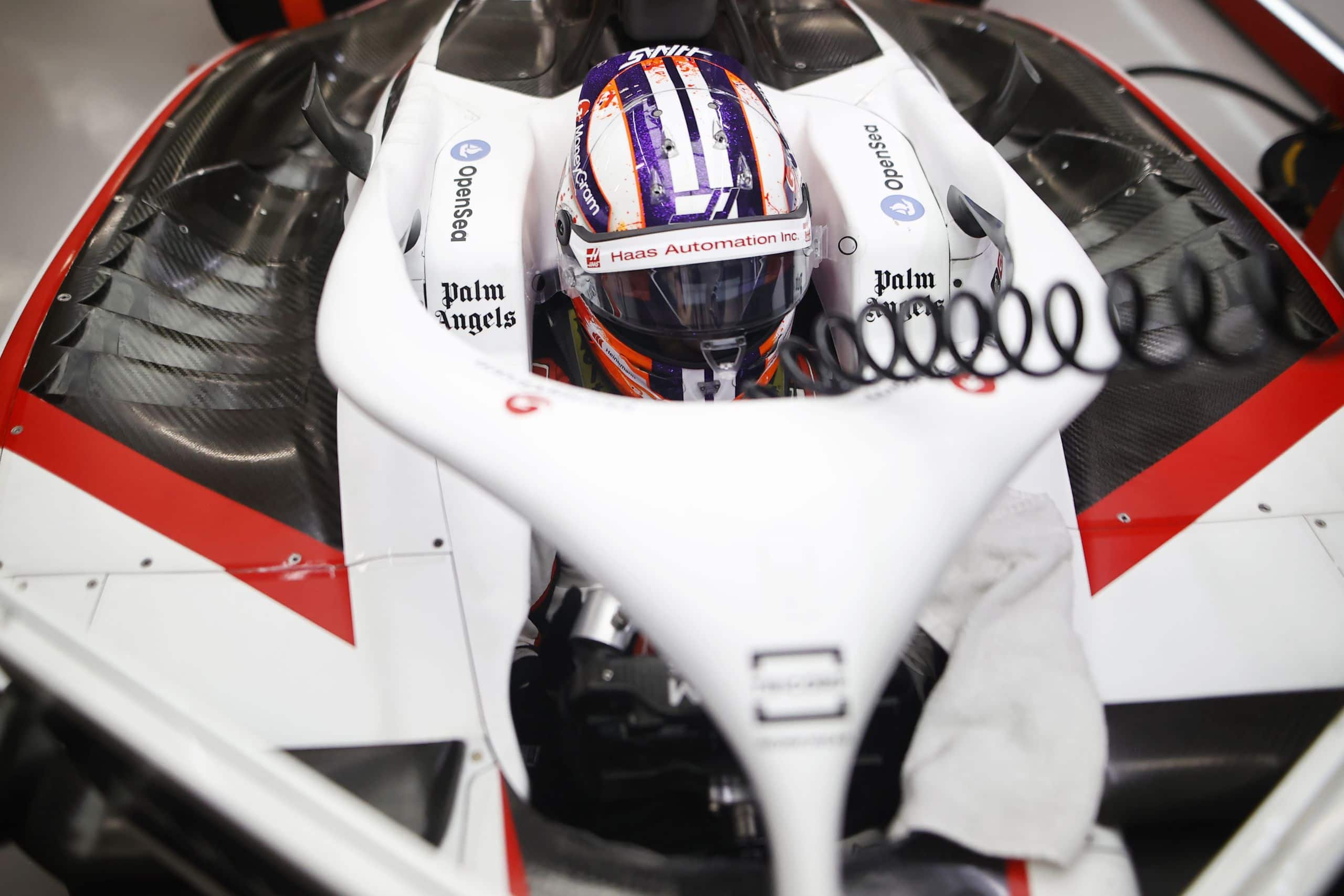
The Physics Behind the Low Seating Position
In Formula One racing, the low seating positions of the drivers play a vital role in ensuring the optimized performance of the car. Adopting a lateral seated position is essential for two key reasons: aerodynamics and the overall stability of the vehicle during high-speed races.
A low seating position helps enhance the aerodynamic efficiency of a Formula One car. Considering that aerodynamics play a crucial role in reducing drag, which in turn, increases acceleration and top speed, minimizing air resistance is of utmost importance. A low seating position and the slim, streamlined design of the vehicles together contribute to reducing the cross-sectional area, thereby ensuring a lower drag force experienced by the car.
In addition to the aerodynamic benefits, the low seating position significantly contributes to a better center of gravity. When the car is closer to the ground, it is better balanced when cornering, braking, and accelerating. A lowered center of gravity allows the vehicle to change direction at high speeds and helps the driver complete laps quicker. This is particularly important on Formula One tracks that feature long and twisty sections with sharp turns.
To accommodate the drivers within the aerodynamic design of the car, they adopt a lateral seated position. This orientation allows them to easily access the pedals and provides a better fit into the narrow, low-lying design of the car. Each bucket seat is custom-made to suit the driver’s body shape, ensuring minimal movement to the sides during the race. These seat positions also enable the drivers to maintain concentration and peak performance, despite having a limited track view above the steering wheel.
In summary, the low seating position in Formula One cars contributes significantly to their aerodynamic efficiency and stability during high-speed races. By adopting a lateral seated position, drivers are able to navigate the demanding tracks and fully harness the capabilities of their powerful vehicles.
Seat Angles: More Than Meets the Eye
Formula 1 drivers adopt a unique seating position in their cars to enhance their performance on the track. While it may appear that drivers are lying down while racing, they are actually positioned laterally in a precise seat angle, which has evolved over the years for various reasons.
One of the primary influences behind the seating angles in F1 cars is the concept of aerodynamics. F1 teams aim to minimize air resistance, or drag, by reducing the cross-sectional area of the car. In doing so, acceleration and top speed are increased. This is achieved by maintaining a low height for the car and incorporating a lateral seated position for the driver. Thus, the specific angles of F1 seats are designed to fit smoothly within the car’s aerodynamic frame, allowing the vehicle to maintain optimal performance on the track.
Another important consideration for seat angles is maintaining a low center of gravity. By having a closer proximity to the ground, the car experiences better stability when cornering, accelerating, and braking. Seat angles are designed to optimize the balance of the car and minimize the potential for it to lift off the ground during sharp turns and high speeds, which, in turn, allows drivers to complete laps at faster times.
When choosing an F1 seat angle, comfort and functionality must also be taken into account. The lateral seating position enables easy access to the pedals and provides ample support to the driver’s body during lengthy races. Every F1 driver has a custom-made bucket seat that contours perfectly to their body shape, ensuring minimal movement to the sides during the race and enhancing control over the vehicle.
In summary, the evolution of seat angles in F1 cars is the result of a combination of aerodynamic considerations, a low center of gravity, and driver comfort. By maintaining the correct seating position and angle, F1 drivers are able to maximize their cars’ performance, while also staying comfortable and secure throughout the races.
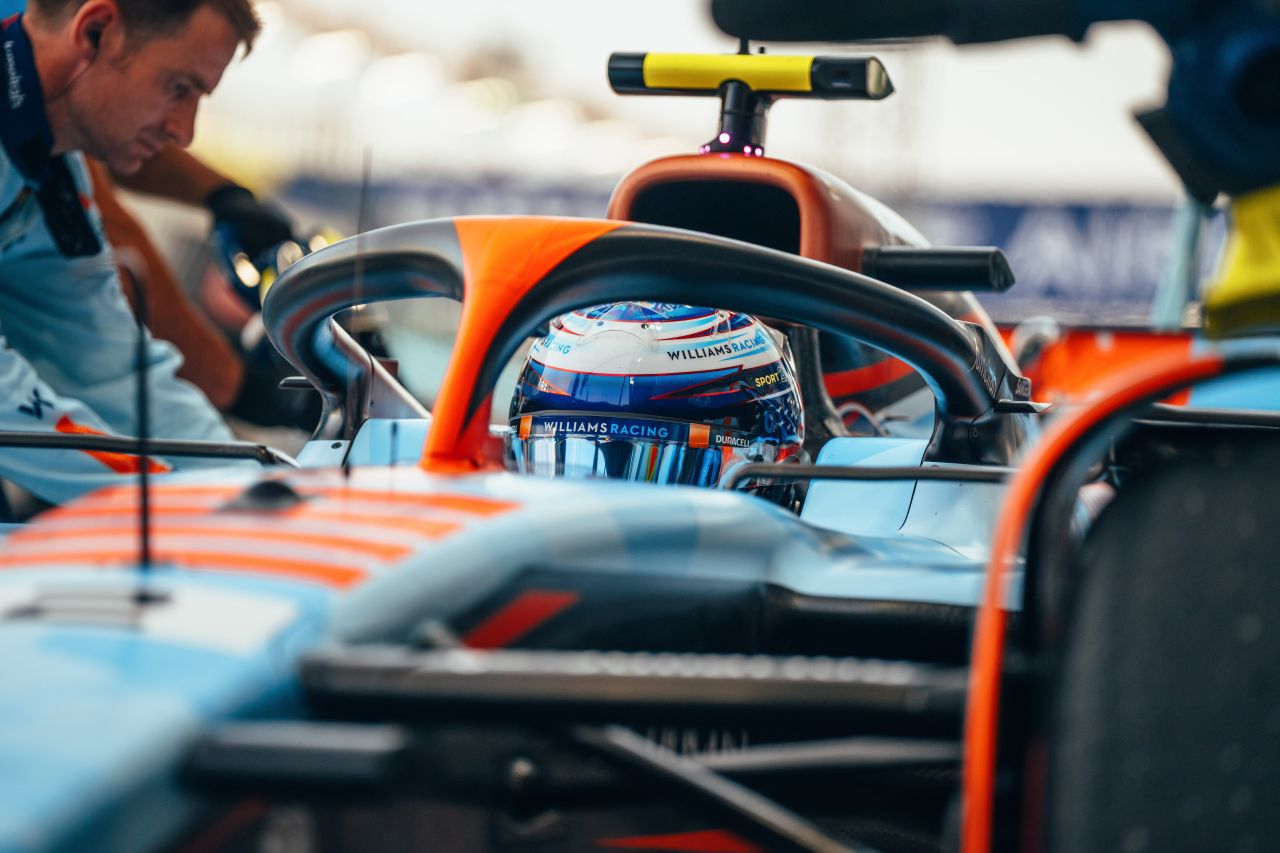
How Elevated is an F1 Driver’s Seat?
The elevation of the driver’s seat in an F1 car is minimal, almost at the floor of the car. This is due to the necessity to reduce the vehicle’s cross-sectional area, which impacts air resistance, or “drag.” The lower the cross-sectional area, the lower the air resistance experienced by the car. By reducing air resistance, F1 teams can improve the car’s acceleration and top speed, critical factors in a race.
A low elevation of the driver’s seat is also essential in controlling the car’s liftoff. At high speeds, F1 cars experience “lift” due to differences in pressure above and below the car. Low elevation helps create less lift and keeps the car grounded, resulting in a stable racing experience. The car’s design, including large wings at the front and rear, also contributes to “downforce” or negative lift, providing additional stability to the vehicle.
Maintaining a low center of gravity also plays a role in the elevation of an F1 car and its driver’s seating position. A low center of gravity allows for better balance when cornering, braking, and accelerating. Essentially, this prevents extra time being wasted during the race due to excess movement that may occur with a higher center of gravity.
Finally, the custom-made bucket seats in F1 cars are designed to perfectly suit the driver’s body shape. This is not only for comfort but to prevent even minimal movement to the sides during a race. The lateral seated position allows drivers to access the pedals comfortably and fit smoothly within the car’s aerodynamic design.
In conclusion, the elevation of an F1 driver’s seat is intentionally low to accommodate the need for improved aerodynamics, safety, and performance. The unique seated position of F1 drivers plays a significant role in optimizing various aspects of racing that contribute to achieving the best possible lap times in the fast-paced world of Formula 1.
Gravitational Considerations: The Center of Gravity in Focus
The center of gravity is an essential concept in understanding Formula One car design and the unique driving position of F1 racers. The center of gravity can be defined as the balance point of an object or the point through which a force will cause pure translation. In simple terms, it is the point where the total weight of the body may be thought to be concentrated.
A lower center of gravity benefits both the driver and the vehicle in several ways. First, it contributes to improved vehicle stability. When a car’s center of gravity is closer to the ground, the car becomes better balanced during cornering, braking, and accelerating. This enhanced balance allows for faster direction changes and quicker lap completion, which are crucial aspects of F1 racing.
Second, a lower center of gravity helps the vehicle remain firmly on the ground when moving at high speeds. While driving at a fast pace, an F1 car experiences lift due to differences in pressure above and below the car. By keeping the car’s height low and designing elements like large wings at the front and rear, F1 teams create downforce, which counteracts the lift and helps the car maintain its grip on the road.
F1 racers not only have to fit into the vehicle’s aerodynamic design but also maneuver and control the car effectively during races. To that end, drivers do not lie down completely; they adopt a lateral seated position. This position allows them to access the pedals with their feet comfortably and be smoothly accommodated within the vehicle’s structure. The driving position contributes to the car’s overall low height, which in turn supports the lowering of its center of gravity.
In summary, the center of gravity plays a significant role in Formula One car design and driver placement. A lower center of gravity leads to better balance, improved handling, increased downforce, and ultimately, a more competitive race car. The unique driving position of F1 racers not only supports their physical needs but also contributes to the car’s overall performance by enhancing its gravitational qualities.
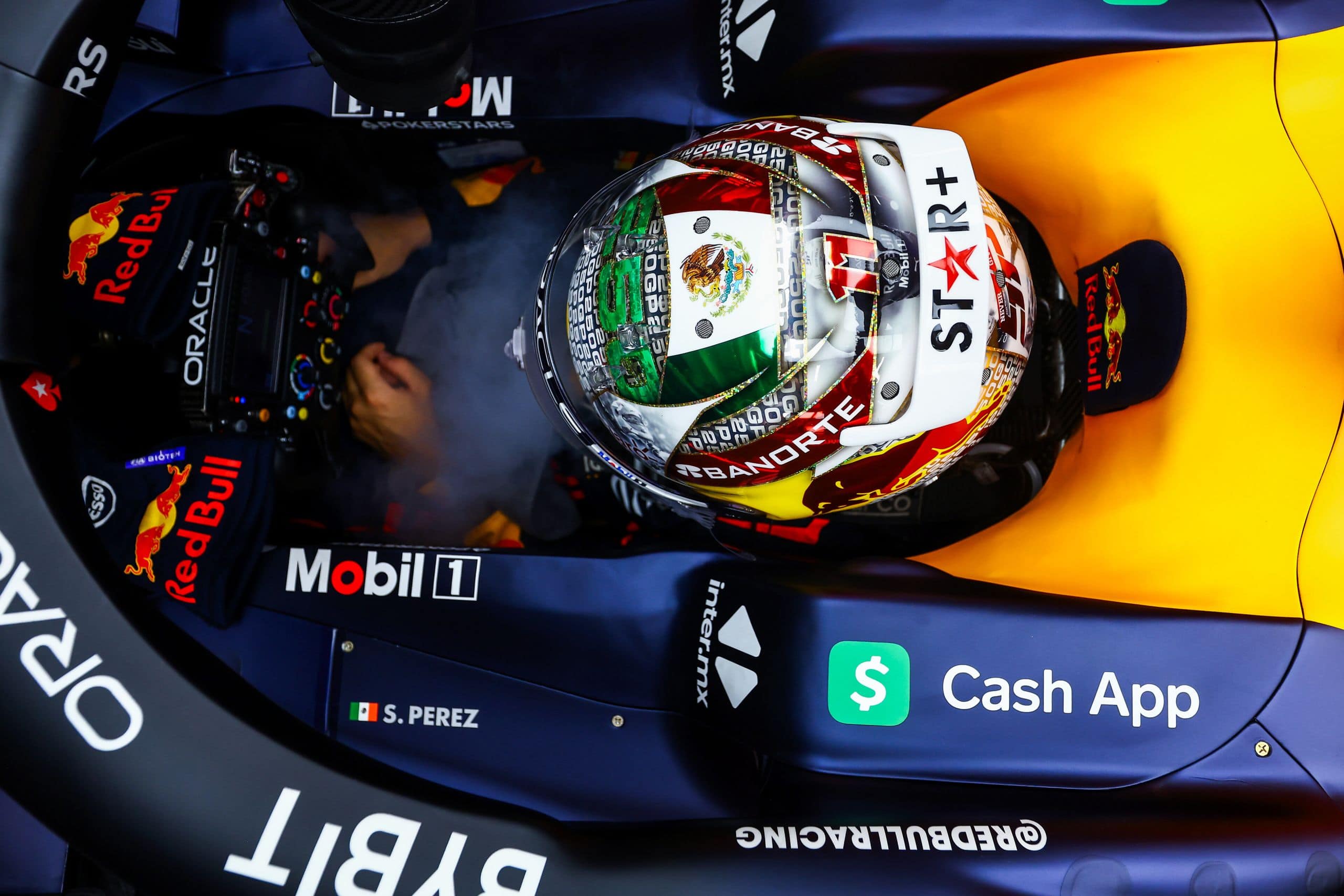
Safety Measures
Formula 1 racing poses many safety challenges for drivers due to the high speeds and often hazardous conditions. The seating position in F1 cars has evolved over time, largely influenced by safety concerns and innovations designed to protect drivers from potential hazards. This section will focus on two key safety features in F1 cars: Seatbelt Design and the Survival Cell.
Seatbelt Design
F1 drivers are required to wear seatbelts specially designed to bear the extreme forces experienced during races. These seatbelts typically feature a six-point harness, which distributes the force of impact more evenly across the driver’s body, reducing the risk of injuries. Additionally, the seatbelt is easily adjustable to ensure a secure fit without hindering the driver’s movements.
The materials used in F1 seatbelts are also crucial for safety. They are made of high-strength fabric, able to resist tearing and withstand the forces of a high-speed crash. In an accident, the seatbelt is designed to stretch slightly, helping to dissipate some of the force and protect the driver from severe injuries.
Survival Cell
Another essential safety feature in F1 cars is the Survival Cell, a crash-resistant structure that protects the driver from significant impacts. This structure encloses the driver in a rigid, reinforced compartment made from advanced composite materials, such as carbon fiber and Kevlar. The Survival Cell is designed to remain intact during crashes, providing a safe space for the driver.
The cockpit area, where the driver sits, is reinforced with layers of protective padding, further securing the driver in a tight, well-protected space. This design aims to minimize the risk of injury from potential debris and absorb the forces from impacts, ensuring the driver’s safety.
In conclusion, the seating position of F1 drivers has been heavily influenced by various safety concerns and innovations. The evolution of seatbelt design and the implementation of the Survival Cell demonstrate the ongoing commitment to driver safety in the high-risk environment of Formula 1 racing.
The Evolution of Formula 1 Seats
In the early days of Formula 1, seating positions varied significantly from today’s standards. Drivers would sit in an upright position, which allowed them to see more of the track and better manage their car’s performance. However, as the sport evolved over the decades, so did the seating positions, prioritizing driver safety, comfort, and car performance.
The 1970s brought significant changes to F1 seating, as the introduction of aerodynamics necessitated a more reclined position for drivers. This change enhanced the car’s stability and reduced its air resistance, ultimately leading to improved lap times. The reclined position also lowered the driver’s center of gravity, which further enhanced car handling and performance.
Moving into the 1980s and 1990s, the design of F1 cars transitioned to a narrower and more compact form. This design shift demanded a more space-efficient seating position, requiring drivers to bend their legs in a seated-kneeling position. This layout also offered better protection for driver’s legs in the event of an accident.
In recent years, the F1 seating position has continued to evolve with advancements in safety and technology. Drivers now sit in a customized carbon-fiber “mold” that contours to their body, ensuring maximum comfort and support. This tailored seat insert, combined with the modern-day “survival cell” around the driver, offers comprehensive protection during high-speed impacts and crashes.
Throughout each era of Formula 1’s history, the seating position has evolved to accommodate the sport’s ever-changing demands, particularly in terms of safety and performance. By tracking these changes decade by decade, we can observe the growth of the sport and appreciate how innovative engineering solutions have shaped the way drivers experience the exhilarating world of Formula 1 racing.
The 1950s: Where It All Began
In the 1950s, Formula One racing was in its infancy, with the first World Drivers’ Championship taking place in 1950. The race cars and technology used in that era were quite basic compared to today’s high-tech machines. Nonetheless, the seating arrangements for F1 drivers in the 1950s played a crucial role in laying the foundation for modern race car ergonomics.
During this period, F1 race cars featured a more upright seating position, with the drivers’ backs at nearly 90 degrees from the ground. Seats were often made from aluminum or even wood, providing minimal support and no padding. This arrangement prioritized visibility over comfort, as well as facilitating quick vehicle entry and exit for the drivers.
Safety was not a primary concern in the early days of F1 racing, which meant that drivers often took to the track in regular clothing without fire-resistant materials. The technology used for seat construction was much simpler than what is currently used, reflecting the limited understanding of the importance of ergonomics and safety in race car design.
As the 1950s progressed, advancements in materials, engineering, and technology gradually improved the design of F1 seats. Teams began to prioritize driver comfort and safety, understanding that these factors would directly impact race performance. Innovations such as tailored seat padding and more form-fitting designs started to emerge towards the end of the decade, as the importance of driver safety and comfort became more widely acknowledged.
In summary, the 1950s marked the beginning of a journey in Formula One that would eventually revolutionize the way drivers sit in their race cars. The early F1 seats were built with basic materials and technologies, prioritizing visibility and ease of entry and exit. Over time, advancements in materials, technology, and a focus on safety and comfort transformed F1 car interiors into the highly specialized designs seen today.
The 1960s: The Dawn of Innovation
The 1960s marked a significant era in the history of Formula 1 racing, with several advancements and innovations introduced during this period that have had lasting impacts on the sport. A major aspect of these changes was the evolving way in which F1 drivers sat in their cars.
During this decade, the focus gradually shifted from drivers’ comfort to optimizing performance and aerodynamics. Unlike previous eras, when drivers sat in more upright positions, the 1960s saw the introduction of a reclined seating position, allowing drivers to become more integrated into the car’s body and lower their center of gravity. This change not only improved the car’s handling and stability but also reduced drag, resulting in better overall performance.
Moreover, the safety aspect of the sport started to gain attention, with measures being taken to make the drivers’ seating position more secure. In the 1960s, harnesses and seatbelts became more common, providing additional restraint and support during high-speed maneuvers and potential accidents.
As the decade progressed, technical innovations in car design also influenced the drivers’ seating position. The development of monocoque chassis and the advent of rear-engined cars led to a more compact and streamlined cockpit design. This resulted in drivers adopting an even more reclined posture, with their legs stretched out towards the front of the car.
Overall, the 1960s witnessed significant changes in the way F1 drivers sat, driven by innovations in car design, performance optimization, and safety considerations. The advancements and principles introduced during this era continue to influence modern-day F1 racing and serve as the foundation for ongoing improvements in the sport.
The 1970s: Embracing Change
During the 1970s, Formula 1 witnessed significant changes in design philosophy as a response to growing concerns about driver safety. The decade saw a shift from the pursuit of raw speed to a greateremphasis on ensuring driver protection in the event of crashes.
One of the most notable design changes in the 1970s was the transition from the traditional front-engine cars to mid-engine cars. This move led to the development of the iconic wedge-shaped cars that characterized the era. The mid-engine layout shifted the center of gravity and improved handling, making the cars more stable and less prone to accidents.
The safety regulations introduced in the 1970s had a profound impact on the way F1 drivers sat in their cars. With the introduction of mandatory six-point harnesses and improved seat designs, drivers were now more securely strapped into cockpit, helping to reduce the risk of injury in case of a collision. The unique seating position, where drivers’ legs were stretched out in front of them, also aided in absorbing impact forces and protecting the drivers from harm.
During this time, Formula 1 also underwent an evolution in the use of materials like aluminum and carbon fiber in the construction of cars. These materials not only reduced the overall weight of the vehicles but also played a significant role in enhancing their structural rigidity. This improved crashworthiness and provided better protection for drivers in the event of an accident.
In summary, the 1970s saw a conscious shift towards prioritizing driver safety in Formula 1. The innovative design approaches and more stringent safety regulations that emerged during the decade played a crucial role in shaping the seating positions of F1 drivers. As a result, the sport saw a gradual transformation in the way drivers sat in their cars, ensuring a more secure and confident driving experience.
The 1980s: Technological Advancements
In the 1980s, Formula 1 witnessed a significant shift in technology, directly affecting the drivers’ seating positions and designs. As a result, F1 cars became more focused on speed, aerodynamics, and safety, continuously pushing the boundaries and adapting to new advancements.
One major technological breakthrough was the widespread adoption of turbocharged engines. These engines increased power output, allowing cars to perform at higher speeds. This development necessitated a change in seating positions for optimal weight distribution, performance, and safety. As cars became faster, drivers started to adopt a more reclined seating posture, reducing their frontal area and improving aerodynamics.
Another crucial innovation in the 1980s was the emergence of composite materials, such as carbon fiber. The use of carbon fiber reinforced polymers (CFRP) in chassis construction allowed for lightweight yet durable structures. In addition to the chassis, these materials were also incorporated into seat designs to minimize overall car weight while enhancing driver safety. As CFRP was more rigid than traditional materials, seat designs could be molded to better suit individual driver ergonomics, providing improved comfort and support.
During this era, Formula 1 also saw advancements in safety features, such as the introduction of the fuel cell safety bladder. This bladder protected the driver from potential fuel leaks, significantly reducing the risk of fire in an accident. As seating positions evolved, this safety feature addition became crucial in protecting drivers from potential hazards.
In summary, the 1980s marked a key period of technological advancement in Formula 1, especially concerning seat designs and driver positioning. These innovations were driven by the need for improved performance, safety, and aerodynamics, as the sport underwent rapid transformation and development. These advancements have laid the groundwork for the highly sophisticated F1 machines and seating positions that we see in today’s racing.
The 1990s: Refinement Era
The 1990s were a pivotal time in Formula 1 history, particularly in terms of seating design and driver comfort. During this decade, teams and engineers focused primarily on refining existing technologies and developing new technical innovations to enhance driver performance and safety.
In the early stages of the 1990s, F1 seating was heavily based on the concept of having a driver positioned as close to the ground as possible, sitting on the car’s floor. This seating position enabled a lower center of gravity and, therefore, improved vehicle stability and handling. It also reduced the overall height of the car, which helped streamline aerodynamics and minimize drag.
As the decade progressed, teams and engineers started to pay more attention to the driver’s comfort and ergonomics. They began incorporating custom-molded seats specifically tailored to fit each driver’s unique body shape, ensuring optimal support and comfort over the course of a race, which typically lasted up to 2 hours. This innovation greatly reduced driver fatigue, enabling them to maintain peak performance and concentration throughout the duration of the race.
The fine-tuning of F1 seating design was further bolstered by advancements in materials and manufacturing techniques. Newer materials such as carbon fiber composites, which were lighter and stronger than traditional materials, allowed for thinner and more comfortable seats while still providing ample support and protection.
The developments in seating design and materials during the 1990s laid the groundwork for the current F1 seating position, where drivers are seated with their legs elevated and knees close to their chest, resembling an astronaut’s seating arrangement. This allows for better weight distribution and increased safety in the event of a crash.
In summary, the 1990s can be seen as the refinement era in Formula 1. It was during this time that significant advances were made in terms of seating comfort and ergonomics, setting the stage for today’s F1 seating designs. This era of innovation and progress contributed greatly to the growth and development of Formula 1 as a sport, paving the way for even greater technological advancements in the years to come.
The 2000s: The Modern Turn
In the 2000s, Formula 1 witnessed significant advancements in technology and design that greatly impacted the way drivers sit in their cars. One primary focus in this era was the ongoing pursuit of both performance and safety enhancements.
Advanced materials and engineering allowed for more compact and efficient F1 cars, leading to more streamlined designs. Consequently, the seating position also evolved to enable drivers to fit within these narrow cockpits. The modern F1 driver sits in a near-reclined position, with their feet elevated above their hips. This posture not only reduces the frontal area of the driver, but also ensures a lower center of gravity, which ultimately improves aerodynamics and handling.
In addition to aerodynamics, safety concerns became increasingly prominent in the 2000s. As drivers were positioned closer to the ground due to the reclined seating, they were inherently better protected in the event of a collision. This design also helped limit the risk of injury from sudden deceleration, as forces were distributed more evenly across the driver’s back.
During the 2000s, seat ergonomics gained more prominence, as customized designs offered greater comfort and support. Utilizing precise measurements and molds of a driver’s body, these made-to-order seats served to minimize physical strain during a race and consequently enhanced the driver’s concentration on the track.
Moreover, the integration of advanced electronics and controls in modern F1 cars required drivers to be intimately familiar with an array of systems. Consequently, the cockpit layout and seating position needed to facilitate easy access to a multitude of buttons and switches, allowing drivers to make critical adjustments on the fly without compromising safety.
To summarize, the 2000s marked a significant turning point for F1 drivers’ seating positions, driven by substantial breakthroughs in technology, materials, and safety measures. These developments facilitated the emergence of a more reclined, ergonomic seating arrangement that accommodated both performance enhancements and improved safety standards.
Today: The Apex of Seating Technology
Formula 1 is known for its continuous advancements in technology and engineering, and seating is no exception. The state-of-the-art technology used in today’s F1 seating plays a crucial role in enhancing a driver’s performance, comfort, and safety.
The modern F1 seating positions are incredibly low and reclined. Drivers sit on the floor of the car, surrounded by electrical components and the fuel tank located behind them in the ‘survival cell.’ This design is highly focused on protecting the driver during high-speed impacts. It is crafted to break away in the event of a collision, minimizing potential injuries.
A critical aspect of F1 seating is the personalized seat fitting process. Each driver’s seat is custom-made using molds of their body to ensure maximum comfort and a perfect fit. F1 races can last up to two hours, making it vital that the drivers remain as comfortable as possible. An ergonomic seating position helps prevent aches or pains that could distract the driver and affect their ability to maintain peak performance throughout the race.
Moreover, F1 seats must be able to withstand high levels of lateral force, as drivers can experience up to 4g during intense cornering. These forces require a unique combination of materials and design that prioritize stability, safety, and weight optimization. Modern F1 seats are crafted with carbon fiber shells, providing both lightweight and robust characteristics. Additionally, energy-absorbing materials like foam inserts help to reduce the impact of vibrations and shocks on the driver’s body.
Furthermore, the seating position plays a strategic role in the car’s overall performance. By situating the driver low and towards the center of the vehicle, F1 teams can significantly reduce the car’s center of gravity. This allows for better weight distribution, ultimately improving handling and responsiveness.
In conclusion, the apex of seating technology in Formula 1 encompasses engineering advancements in safety, performance, and comfort. The low and reclined seating positions, custom fittings, and state-of-the-art materials all contribute to enhancing the driver’s ability to perform at their best while navigating the demanding world of F1 racing.
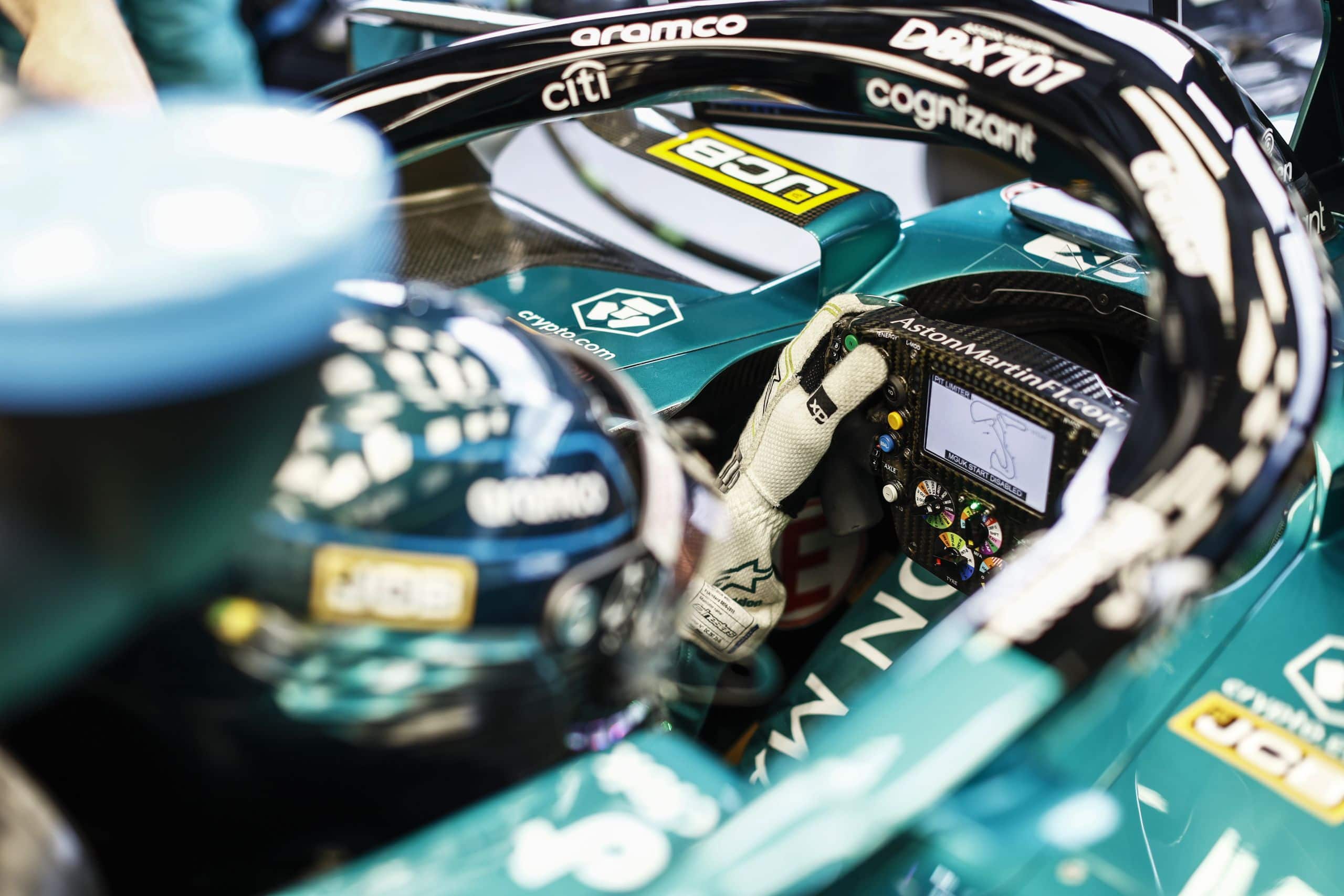
Why Do F1 Drivers Sit The Way They Do? – Final Thoughts
In the high-stakes world of Formula 1, every aspect of a driver’s experience is meticulously considered and optimized. The seating position of an F1 driver plays a crucial role in their performance in the highly competitive sport. Since driving in an aerodynamic and confined space is essential for success, teams such as McLaren invest significantly in the design and customization of their cockpits to ensure that each driver achieves the perfect fit.
Over the years, F1 cars have evolved, and so has the seating position; drivers now sit on the floor of the car, within the confines of the survival cell. This positioning not only contributes to safety but also enhances the overall performance of the vehicle on the racetrack. Sitting low to the ground allows drivers to maintain control and stability during a race, but it does not come without its challenges.
Adapting to the unique seating position demands exceptional physical fitness, as F1 drivers need to endure the dramatic forces experienced during acceleration, deceleration, and cornering. By developing and maintaining a high level of athleticism, drivers can successfully navigate the intense demands of this elite motorsport and its continuous evolution.
In conclusion, the way F1 drivers sit is an essential aspect of both their personal performance and the overall success of their team. By striking a balance between safety, aerodynamics, and comfort, drivers can deliver their best performances on the track, ensuring that fans never miss a single moment of thrilling racing drama.
Why Do F1 Drivers Sit The Way They Do? – Frequently Asked Questions
How is the seating position in F1 cars different from regular cars?
The seating position in Formula 1 cars is strikingly different from regular cars. While drivers typically sit upright in road cars, in F1 cars, the drivers are almost lying down, with their legs stretched out in a reclined position. This unconventional seating posture plays a crucial role in the overall design and aerodynamics of the car.
Why do F1 drivers sit reclined?
F1 drivers sit reclined for mainly three reasons: safety, weight distribution, and aerodynamics. The low, reclined seating position places the driver closer to the ground, lowering the car’s overall center of gravity. This provides better stability and handling on the track. It also helps in positioning the driver inside the car’s survival cell, which is a specially designed structure to protect the driver during high-speed impacts and accidents. The aerodynamics are improved by reducing drag and making the car more streamlined.
How does an F1 driver sit?
An F1 driver sits in a custom-molded seat that perfectly fits their body shape, providing maximum support and comfort during the race. The driver’s legs are extended straight out in front with their feet positioned above the pedals. The driver’s back is supported, and their head is slightly elevated, allowing them to see the track and steering wheel clearly. The seat is firmly secured within the car’s survival cell, ensuring optimum safety.
Is there a standard seating position for all F1 drivers?
There is no standard seating position for all F1 drivers, as the car’s cockpit and seating are customized based on each driver’s size, shape, and personal preferences. However, all drivers adopt a reclined posture with their legs extended straight out in front of them, as it is the most efficient and aerodynamically favorable position.
How do F1 drivers adjust their seating in the cockpit?
F1 drivers work closely with their teams and car engineers to fine-tune their seating position within the cockpit. This includes determining the optimal height of the seat, the distance to the steering wheel, the angle of the seatback, and other seating components. Small adjustments can be made through a combination of seat padding and seat inserts, which can be added or removed to customize the driver’s position according to their requirements.
What role does the steering wheel play in an F1 driver’s seating position?
The steering wheel in an F1 car is a crucial element in the driver’s seating position, as it directly affects their ability to control the car. Steering wheels in F1 cars are much smaller than those in regular cars and are packed with buttons and controls to manage various aspects of the car’s performance. The driver’s hands must comfortably grip the steering wheel without straining their arms or compromising the seating posture. The distance between the seat and the steering wheel is a key factor in ensuring proper ergonomics, allowing the driver to maintain focus and avoid discomfort or fatigue during a race.

